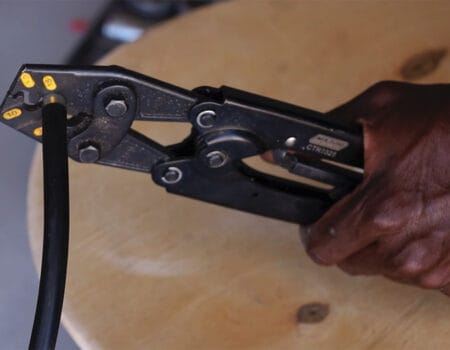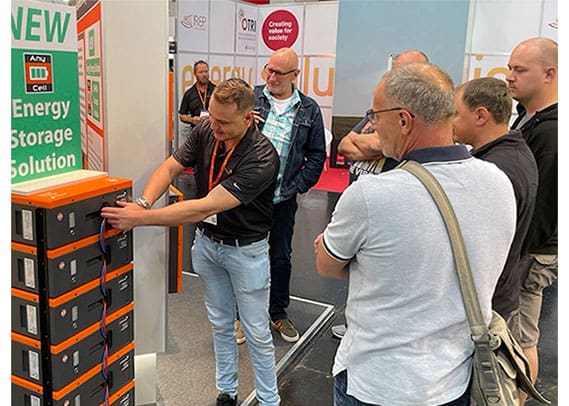
Imagine what day-to-day life would be like living in extreme poverty conditions. Extreme poverty, defined as living on less than $1.90USD a day, affected almost 10% of the world’s population in 2020, according to the World Bank’s biennial Poverty and Shared Prosperity Report. If you lived on $1.90USD a day, what decisions would you make for your nutrition, health, shelter, clean water, and other basic needs? What if you had children? What choices would you make about these basic needs plus their education?
Last Mile Communities: Isolated and Invisible
There are many barriers to overcoming extreme poverty. One barrier is isolation. A remote and isolated settlement lacks a roadway or waterway access to deliver essential supplies in bulk, such as food, medicine, or durable shelter materials. Isolation is also political, where communities are overlooked due to poverty, race, education, and/or representation. These are “last mile communities”. The Aspen Institute explains: “They live in communities that are not only geographically remote but are more broadly defined as the hardest to serve communities around the world. These communities include remote villages in rural Rwanda as well as poor urban neighborhoods of Nairobi or New York City.” Research has shown that servicing people in last mile communities takes awareness, effort, investment, and strategy to help break the cycle of poverty.
Positive Impact: Grassroots Renewable Energy Access
Access to electricity is vital to alleviate poverty and improve health and living conditions. While power utility infrastructure may be years away from reaching last mile communities, renewable energy solutions are available today. Access to clean, reliable energy that can be transported and implemented by individuals can transform lives and help break the cycle of poverty:
- All-in-one safe solar home lighting can replace hazardous and toxic kerosene lighting as well as improve educational outcomes by increasing reading and studying time.
- Small solar systems can power radios and TVs for news, information, and education.
- Solar-powered water pumps can change the lives of villagers, often women, who walk extraordinary distances at great physical and time costs to collect fresh water and for local farmers who can pump water from boreholes to crops for irrigation.
- Solar-powered lighting can extend operating hours for health clinics for more people to access healthcare and increase safety and economic opportunities for local vendors in community areas.
- Solar-powered DC refrigerators at community health centers can store medicines and vaccines at required temperatures and, for local farmers, provide critical food storage of their perishable products.
Many of these remote communities continue to live the life they have known for generations and may be unaware of more cost-effective, safer, and healthier alternatives. This is why organizations and individuals need to understand conditions, imagine strategies, and set a determined course of action to make a difference, overcoming challenges with targeted outreach and education.
Examples of creative, grassroots programs to provide renewable energy access to last mile communities include:
- Let There Be Light International’s Safe Births + Healthy Homes program provides energy access to vulnerable communities in Uganda, Kenya, and Malawi. The grassroots program focuses on providing off-grid solar systems for health clinics to improve healthcare delivery by extending hours of operation beyond daytime. Aimed at individuals, this program educates mothers about the benefits of giving birth under professional supervision in a health clinic and provides new mothers with a portable solar light for use at home to care for their baby and to replace dirty and dangerous light sources, such as kerosene lamps, with reliable and safe light.
- Asociación Mar a Mar in Costa Rica, with financial support from the Embassy of New Zealand, provided a new small off-grid solar system to provide light and mobile phone charging in the community building and school building in the very remote community of Tsiobata. The solar lighting will extend to the new museum to attract hiking tourism from the popular El Camino of Costa Rica.
- Nigeria Intelligent Clean Energy is partnering with local companies to supply Sub-Saharan African communities with technology for 24/7 reliable and clean power. In the pilot stage of the program, NICE and VAYA Energy Solutions provided a solar-powered Phocos DC refrigerator to a street vendor who sells cold drinks and water – items in high demand in hot weather. The vendor no longer needs to buy, transport, and store ice to keep her customers happy and sales strong.
- Kleinskool Community Project Trust, in creative collaboration with solar designer and installer Genergy and equipment manufacturers including Phocos, commissioned an off-grid power solution for its preschool and soup kitchen in one of the poorest and violence-riddled communities in the Province of Eastern Cape, South Africa. Sustainable energy solutions now enable the school and soup kitchen to function at its full potential with night operation, reliable food refrigeration, fan cooling in the classroom, and property security after dark, when load shedding conditions left the school and neighboring properties in complete darkness and vulnerable to break ins.
- One Earth and New Energy Nexus ENVenture, part of New Energy Nexus Uganda, are partnering to empower rural distributors to launch sustainable, clean energy enterprises that supply low-cost solar lights, water filters, briquettes, and improved cookstoves to rural households. These rural distributors are in the best position to service last mile communities with their local relationships, knowledge, experience, and staff – providing a lifeline to these communities when government services are nonexistent.
- Manamuz Electric’s Coldbox Store has introduced sustainable cold chain solutions and transport systems in Nigeria that are completely powered by solar energy. These solutions help local farmers and vendors reduce post-harvest loss and food waste while making more food available for consumption.
No One Will Be Left Behind, Even at the Last Mile
In its 2030 Agenda for Sustainable Development Declaration, the United Nations writes, “As we embark on this great collective journey, we pledge that no one will be left behind. Recognizing that the dignity of the human person is fundamental, we wish to see the Goals and targets met for all nations and peoples and for all segments of society. And we will endeavor to reach the furthest behind first.”
The Energy Progress Report 2020 notes this is the last decade to leave no one behind: ‘With just 10 years left to reach the United Nations Sustainable Development Goal 7 by 2030, global efforts must be redoubled, particularly in Africa, or the world will fall short of ensuring universal access to affordable, reliable, sustainable, and modern energy.”
Bringing essential services, renewable energy solutions, and education to the poor, whether in remote rural areas or the slums of megacities, is a great challenge for governments in developing countries for many reasons. Innovative companies, NGOs, strategists, and volunteers are making major efforts to make an impact but of course, the hope is we make more progress faster to allow these communities to live with dignity and basic human needs.












